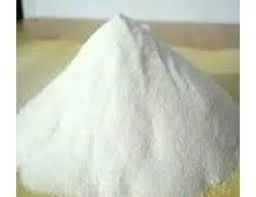
Dec . 19, 2024 16:53 Back to list
redispersible polymer powder manufacturing process
The Manufacturing Process of Redispersible Polymer Powders
Redispersible polymer powders (RDPs) are essential additives widely used in construction, adhesives, coatings, and various engineering applications. These powders are primarily derived from polymer emulsions and enable the enhancement of properties such as flexibility, adhesion, and water resistance in finished products. This article will outline the manufacturing process of RDPs, focusing on its key stages and considerations.
1. Raw Material Selection
The production of redispersible polymer powders starts with careful selection of raw materials. The primary ingredient is a polymer emulsion, typically based on vinyl acetate, ethylene, styrene, or acrylics. These polymers are chosen for their specific attributes, such as weather resistance, binding strength, and flexibility. In addition to the main polymer, additives such as surfactants, stabilizers, and coalescents are used to improve the stability and performance of the final product.
2. Emulsion Polymerization
The heart of RDP production lies in emulsion polymerization, where monomers are polymerized in an aqueous solution to form a stable emulsion. This process involves several steps
- Mixing The chosen monomers are mixed with water and surfactants to create an emulsion. The type and concentration of surfactants are critical as they stabilize the emulsion and prevent the formation of clumps. - Polymerization Initiators, such as potassium persulfate or azo compounds, are added to start the polymerization reaction. The mixture is heated, typically at temperatures of 60-90°C, which encourages the monomers to react and form polymer chains.
- Post-Polymerization Processing Once the desired molecular weight is achieved, the reaction is terminated, and the emulsion is cooled. This stage may include adjustments in pH or the addition of further stabilizers to enhance the emulsion's stability.
3. Spray Drying
redispersible polymer powder manufacturing process

After the emulsion is prepared, the next crucial step is converting the liquid emulsion into a dry powder. This is predominantly achieved through a process known as spray drying
- Atomization The polymer emulsion is atomized into tiny droplets using a nozzle in a spray dryer. This is pivotal as the droplet size affects the final powder properties.
- Drying Hot air is introduced into the drying chamber, evaporating the water from the droplets and resulting in the formation of fine polymer particles. The drying air temperature and the rate of air flow are carefully controlled to optimize the drying process and minimize thermal degradation.
- Collection The dried polymer powder is then collected using a cyclone separator or bag filter, which captures the fine particles, while allowing moisture-laden air to escape.
4. Post-Processing and Packaging
Once collected, the redispersible polymer powder may undergo additional post-processing steps such as milling or sieving to achieve the desired particle size distribution. This is essential for ensuring consistency in application and performance in end-use products.
Finally, the powder is packaged in moisture-proof bags or containers to preserve its quality. Proper storage conditions are crucial, as RDPs can be sensitive to humidity and high temperatures, which can affect their redispersibility and performance.
Conclusion
The manufacturing process of redispersible polymer powders is a complex interplay of chemistry and engineering. It begins with the careful selection of raw materials and progresses through emulsion polymerization, spray drying, and meticulous post-processing. The resulting powders provide significant advantages in various applications, enhancing the performance of construction materials and adhesives. As technology advances and demand for high-performance materials continues to grow, innovations in RDP manufacturing processes are expected to evolve, leading to even greater product functionalities.
-
Versatile Hpmc Uses in Different Industries
NewsJun.19,2025
-
Redispersible Powder's Role in Enhancing Durability of Construction Products
NewsJun.19,2025
-
Hydroxyethyl Cellulose Applications Driving Green Industrial Processes
NewsJun.19,2025
-
Exploring Different Redispersible Polymer Powder
NewsJun.19,2025
-
Choosing the Right Mortar Bonding Agent
NewsJun.19,2025
-
Applications and Significance of China Hpmc in Modern Industries
NewsJun.19,2025







